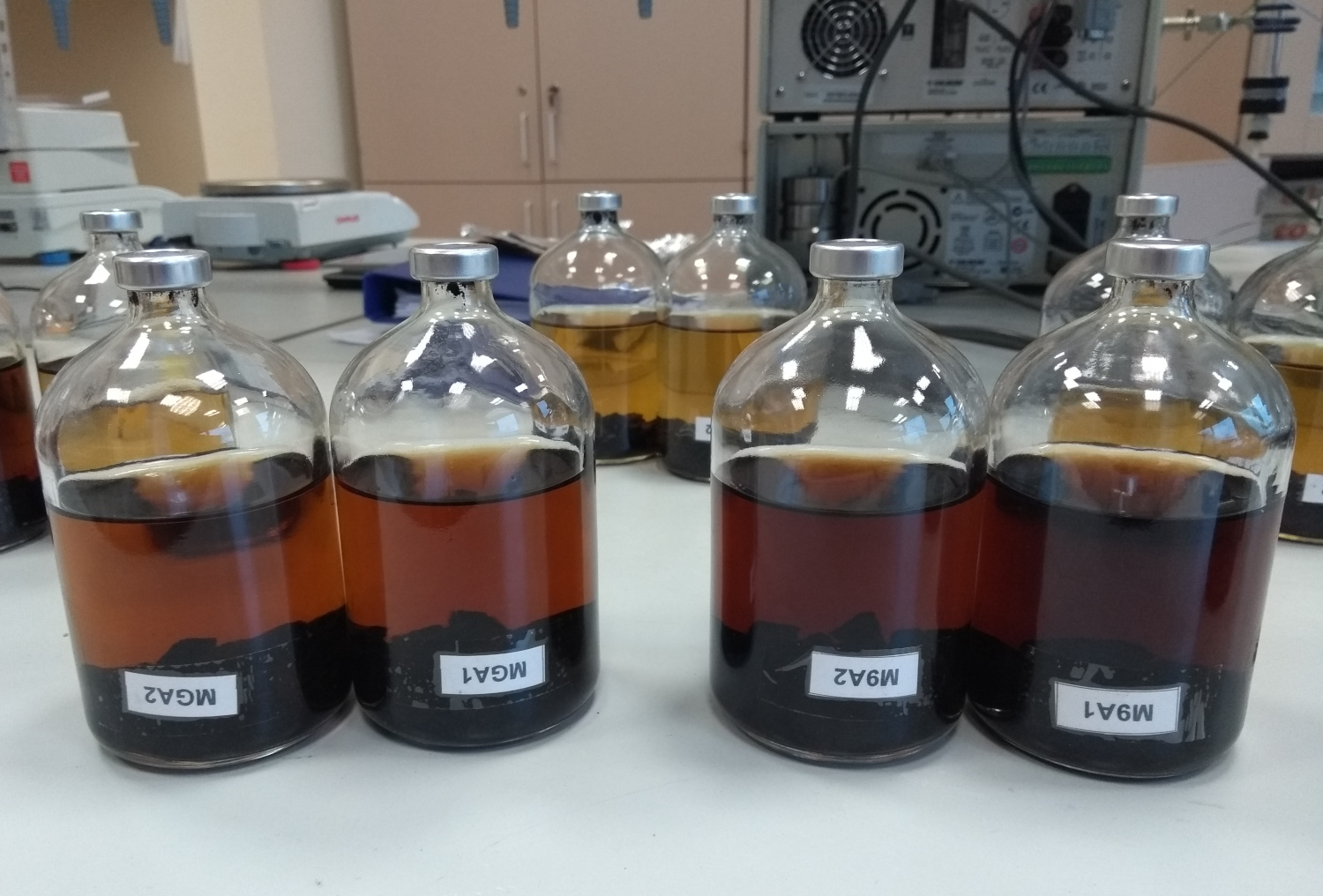For many years, lignite has been of interest to scientists looking for alternative utilization methods of this raw material. One of them is the microbial decomposition of lignite to produce methane-rich biogas. The article presents the results of experimental studies on the stimulated biodegradation of different lignite lithotypes from the Konin area. Detritic lignite and xylite (fossil wood) were decomposed under anaerobic conditions by a consortium of methanogenic microorganisms collected from the anaerobic digestion chamber of the wastewater treatment plant in a sugar factory. The study showed that xylite is a better raw material for microbial methane production than detritic lignite. Methane was formed on the acetotrophic pathway from the decomposition of acetic acid, an intensive decomposition of polymers – lignin and cellulose – was also observed. The microbial communities selected in the presence of different lignite lithotypes, which taking part in their biodegradation, were also characterized.
The research was conducted in 2015-2018 during the postdoctoral fellowship of Dr. Michał Bucha at the Institute of Earth Sciences of the University of Silesia as part of the NCN FUGA 4 grant entitled “Mechanisms of biogenic methane formation in lignite beds of the Konin region”.
Bucha, M., Detman, A., Pleśniak, Ł., Drzewicki, W., Kufka, D., Chojnacka, A., Mielecki, D., Krajniak, J., Jędrysek, M.O., Sikora, A., Marynowski, L., 2020: Microbial methane formation from different lithotypes of Miocene lignites from the Konin Basin, Poland: Geochemistry of the gases and composition of the microbial communities. International Journal of Coal Geology; 229, 103558. https://doi.org/10.1016/j.coal.2020.103558






